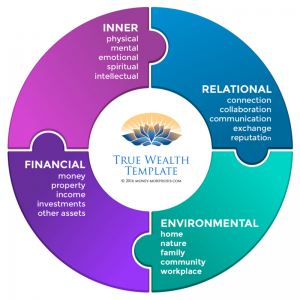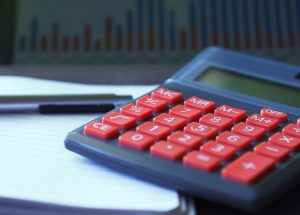
Podcast: Play in new window | Download | Embed
Subscribe: Apple Podcasts | Google Podcasts | RSS
“The future is not some place we are going to, but one we are creating. The paths are not to be found, but made, and the activity of making them changes both the maker and the destination.” —John Schaar
Here is an invitation to chart the territory of your wealth. Too often, wealth is reduced to a purely financial definition; this is like taking a photo in black and white—it only captures a portion of the whole picture. Through exploring the other aspects of worth, you will create a vibrant map of your holistic value, your true wealth. As you complete this simple yet illuminating inventory, you will discover all that is really important to you.
Develop the skills and awareness to utilize the full range of your resources, both external and internal, to create optimal wealth. Through entering a conversation about value and worth, you are choosing a doorway that opens to a landscape of plenty. Here we find our longing to engage in a satisfying relationship with life itself! Through approaching the inner, relational, financial, and environmental wealth with curiosity and courage, one discovers unexpected treasures and insights.
Wealth is not entirely quantifiable, for it defines a quality of life that is both satisfying and varied. Wealth is not a goal, but a state of being to be recognized, because it is subjective and incredibly personal. The following exploration of your monetary past begins a process for you to discover your true wealth.
 The True Wealth Template
The True Wealth Template
The power of giving thanks is immense. The benefits are many, including reduced stress, anxiety, and depression. Giving thanks activates your hypothalamus, which regulates hunger, sleep, body temperature, metabolism, and how the body grows (see: “6 Ways Gratitude Affects Your Brain”).
Write a descriptive, emotional, letter to someone whom you feel you haven’t really thanked, and then read it aloud. Get creative—this letter can address the little and big things. It could be to the friend who helped you at a crucial time, to the toddler who got you to play on the floor, to a teacher who influenced you, or to a stranger who displayed kindness. Gratitude knows no bounds. You’ll reap the benefits of giving thanks in any way you choose.

Here’s the replay of the webinar.
DYTW Week 1 from Discover Your True Wealth.
Take a look at your money history and understand basic accounting steps (see attached files for download). Set aside some quiet time to reflect and write about the answers about your monetary past, and for even more benefit, talk to someone about it.